By Elizabeth Ogilvie, Placement Student, Game and Wildlife Scottish Demonstration Farm
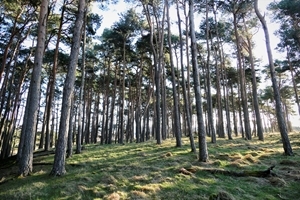 Over the past month, thrush surveys have been the primary job here at Auchnerran. Luckily we have been able to continue this study despite the COVID-19 pandemic as we are based on the farm, which is in a remote location, and no travelling is required.
Over the past month, thrush surveys have been the primary job here at Auchnerran. Luckily we have been able to continue this study despite the COVID-19 pandemic as we are based on the farm, which is in a remote location, and no travelling is required.
Starting soon after sunrise, we walk either the boundaries or a line through the middle of all areas of woodland on the farm listening for the breeding calls of male thrush species, who are often seen calling from the tops of trees. The species that are studied include song thrush, mistle thrush and blackbirds. This takes us three or four mornings to complete, and we repeat this process four times throughout March in order to get a clear idea of the numbers of thrush territories we have here.
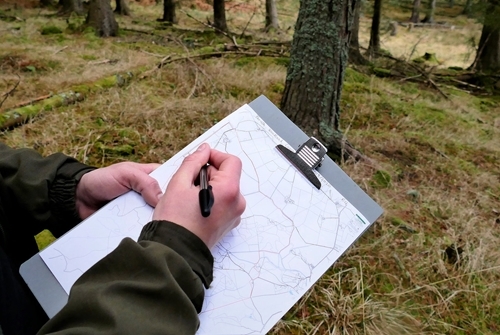 Here Max marks a song thrush on the map.
Here Max marks a song thrush on the map.
There are five species of thrush present on the farm: song thrush, mistle thrush, blackbird, fieldfare and redwing. However, fieldfare and redwing do not breed on the farm as they are migrant species and are therefore not present in thrush breeding studies.
When out surveying, we are mainly relying on hearing the calls of the different thrushes. This requires quite a bit of concentration, especially to start with, in order to pick out the sound of the thrush over the noise from all the other birds. Fortunately for us, Marlies is here to teach us the different features to listen for. We also started these surveys immediately after doing our winter bird counts, so we’d already had some practice at identifying the many songbirds we see here.
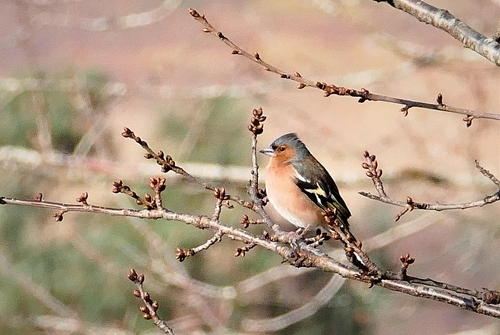
Chaffinches are often calling very loudly when we’re out listening for the thrush!
The song thrush is the most fun to listen to, always changing their call after three repeats of a phrase, and often imitating other birds – so far, we’ve heard impersonations of gulls, curlews and buzzards! It really does pay to listen twice before deciding what you’ve heard.
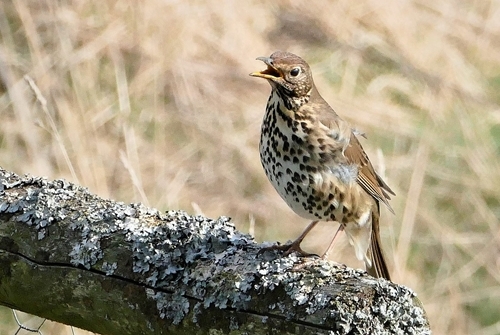
This is a song thrush singing on our garden fence.
The mistle thrush has a very pretty call, pausing regularly between melancholy phrases. The blackbirds are much quieter, and we only tend to hear them making their alarm calls, often as they bob past in front of us. Occasionally, remaining fieldfares and redwings are seen flying in groups, particularly at the beginning of March. As we do not see them as often, our call ID is not quite as good as it is with other thrush species, however, with modern technology we are able to listen to the calls of birds while out in the field using apps on our phones! This has come in handy on several occasions when we can’t work out what it is we are hearing – the most interesting being a very piercing call from a kestrel, a bird we’d not heard in the past, and a snipe calling rather than drumming.
Within a few hours of sunrise, we finish the woodland surveys, as the thrushes stop calling from their treetop perches and move to the nearby fields to feed. This allows us to begin our field counts, where we drive the roads and tracks on the farm, using binoculars to view all areas of the fields in order to count the thrushes as they feed. By marking their territories in woodlands and where they feed we can see if they choose to nest in specific areas depending on habitat, field type and food availability.
While we’re out doing these field surveys, we get to see the many waders that have taken up residence on the farm over the last month or so. It has been exciting to see them gradually breaking off from large groups and settle into their preferred nesting spots in their pairs.
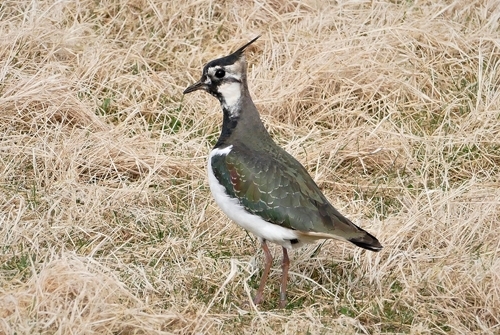
This is one of our female lapwing that we saw while doing field surveys.
After inputting the data we have collected, it lets us get an idea of how many breeding pairs of each thrush species we have at Auchnerran. It is the males we hear during these counts, calling in order to attract females. Because they always call from their own territory, we regularly hear them from the same places, and by the end of the month we know where to expect to hear them.
In previous years, the number of calling males has correlated closely with the number of breeding pairs and nests found. This means that even before they have starting nesting, we can estimate the number of pairs we have here. This year it looks like we have around 65 pairs in total of all the thrush species!
All photos credit: Elizabeth Ogilvie